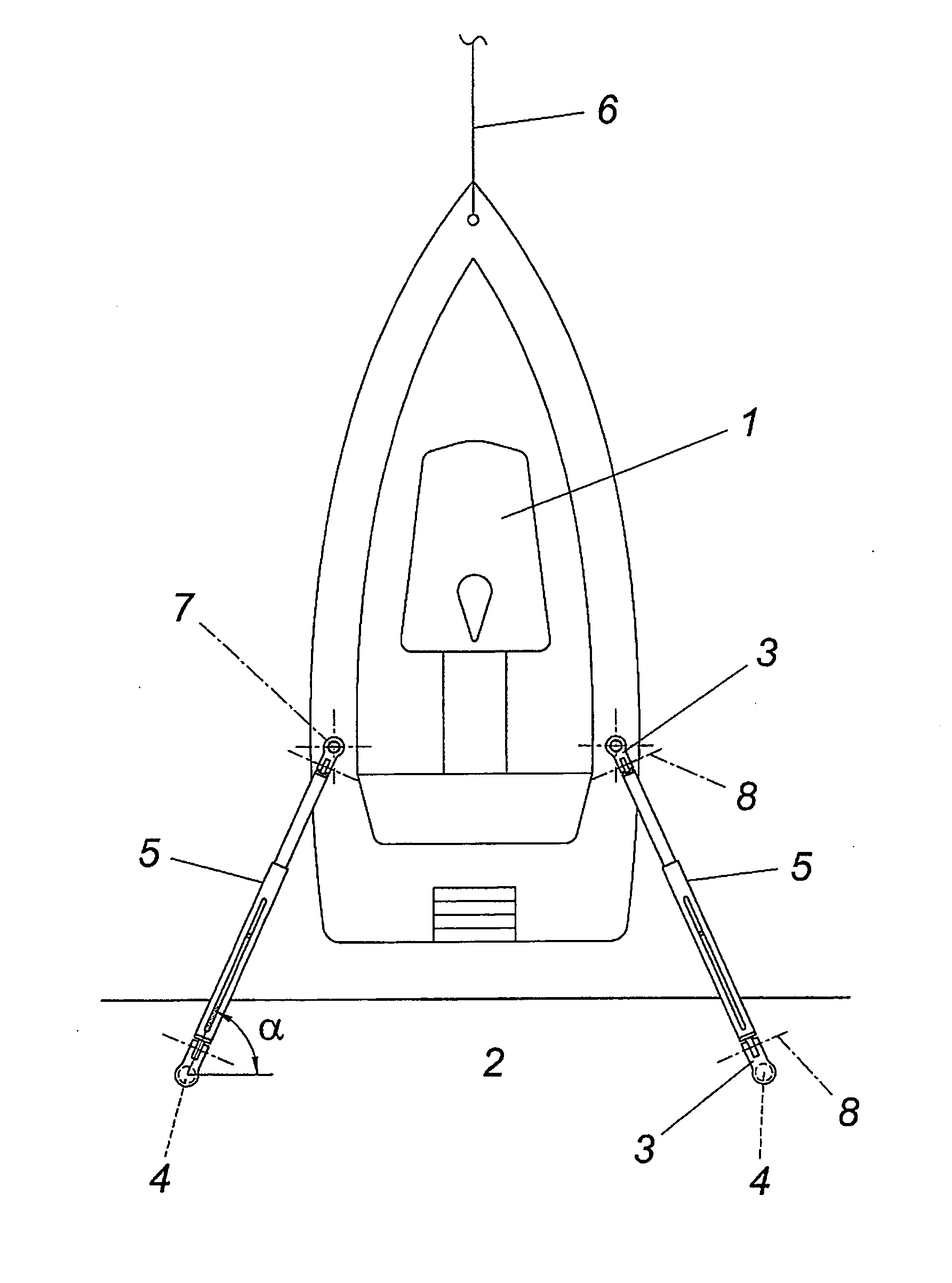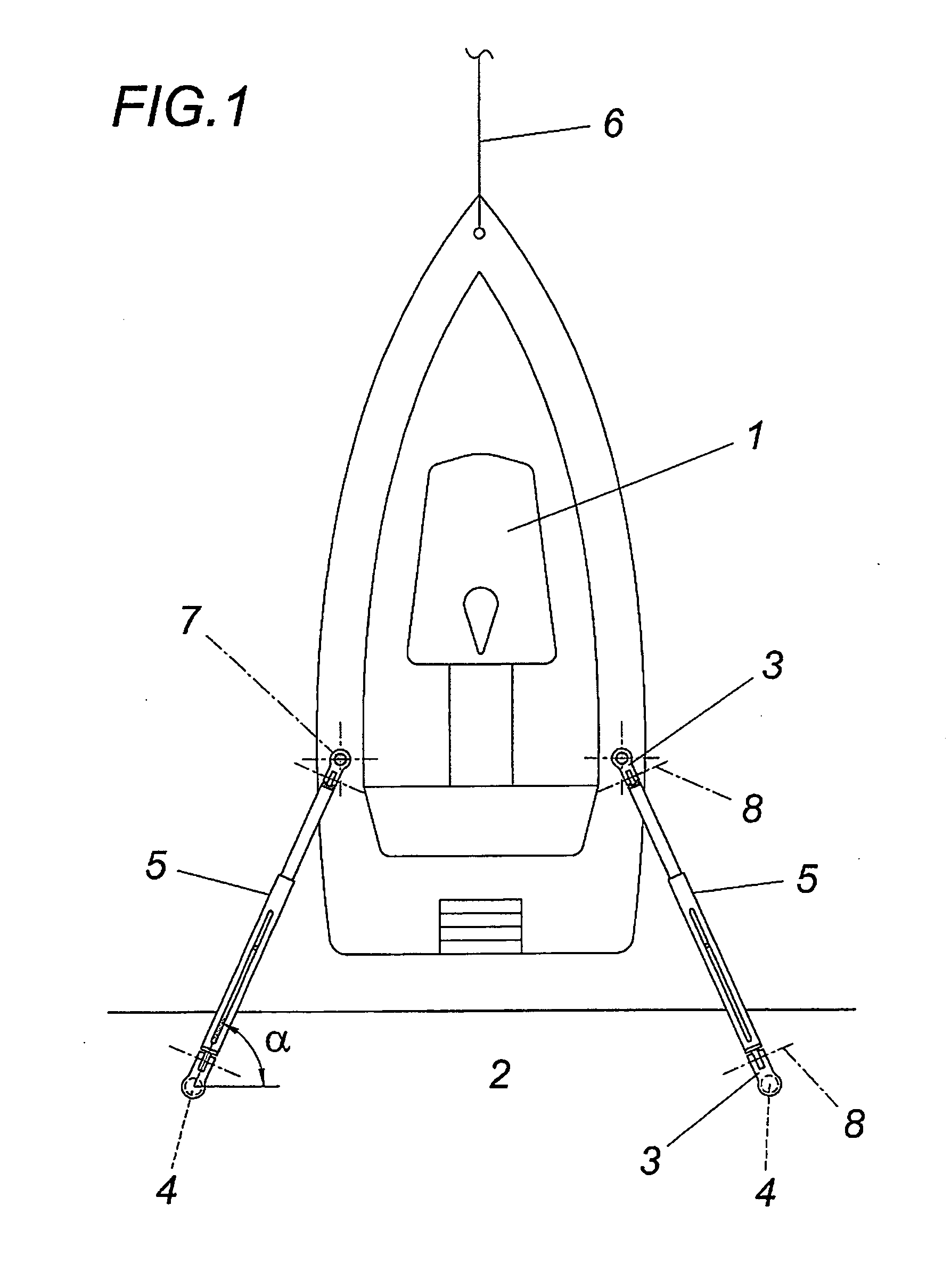Apparatus for fixing floating bodies
a technology for fixing floating bodies and accessories, applied in waterborne vessels, hydroelectric engineering, marine site engineering, etc., can solve the problems of floating body drifting off in an uncontrolled manner, other ships or the floating body itself or the landing body becoming damaged, and the anchor will become detached
- Summary
- Abstract
- Description
- Claims
- Application Information
AI Technical Summary
Benefits of technology
Problems solved by technology
Method used
Image
Examples
Embodiment Construction
[0024]An apparatus for fixing floating bodies 1, in the illustrated exemplary embodiment a boat, to a landing body 2 comprises two holding booms 5 fixed to respective mooring means 4 by means of fittings 3 functioning as coupling elements, in each case at one end on the floating body 1 and at the other end on the landing body 2. The land-side mooring means 4 are in the illustrated exemplary embodiment in particular bills or the like sunk into the harbour mole. In addition, the floating body 1 is secured on the bow side using a bower anchor 6 or using a mooring or the like.
[0025]In order to be able to keep in a simple manner the floating body 1 at a constant distance from the landing body 2 and in this case to ensure secure fixing of the floating body 1 which is nevertheless securely fixed even if the anchor 6 should come loose, it is proposed in accordance with the invention that the holding booms 5 be fixed, at least at one end, namely on the floating body 1, to the associated moor...
PUM
 Login to View More
Login to View More Abstract
Description
Claims
Application Information
 Login to View More
Login to View More - R&D
- Intellectual Property
- Life Sciences
- Materials
- Tech Scout
- Unparalleled Data Quality
- Higher Quality Content
- 60% Fewer Hallucinations
Browse by: Latest US Patents, China's latest patents, Technical Efficacy Thesaurus, Application Domain, Technology Topic, Popular Technical Reports.
© 2025 PatSnap. All rights reserved.Legal|Privacy policy|Modern Slavery Act Transparency Statement|Sitemap|About US| Contact US: help@patsnap.com



